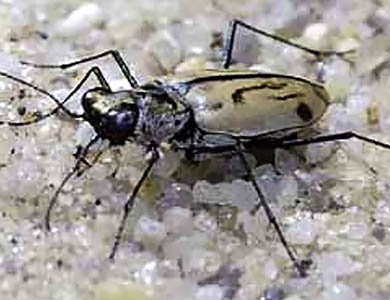
By Stefanie Jackson – The Cape Charles Natural Area Preserve is closed for repairs as of Wednesday, July 29, due to trespassing and unauthorized access to the natural habitats from the boardwalk, according to a recent press release from the Virginia Department of Conservation and Recreation (DCR).
“The urge to get outside during the pandemic has led to a steadily increasing level of visitation that is impacting the stability of the boardwalk and the sensitive natural communities it traverses,” said Dot Field, the Eastern Shore steward of DCR’s Natural Heritage division.
The natural area preserve is about a half-mile from the Cape Charles Harbor, with its entrance tucked away behind a chemical lab on Patrick Henry Avenue.
Public access to the preserve is permitted via the boardwalk, which ends in an overlook of the Chesapeake Bay.
A sign at the end of the boardwalk warns visitors that beach access is not permitted from the preserve.
Unauthorized access to the shore has worsened erosion at the end of the boardwalk and “is in direct conflict with the conservation purposes of the preserve,” the press release stated.
“Repairs are needed to ensure public safety if the preserve is to open for reuse,” it continues.
The 29-acre preserve will be closed until at least Oct. 1.
During the closure, the boardwalk will be repaired and modified so the public can access the preserve safely without further worsening shoreline erosion or otherwise negatively impacting protected natural heritage resources.
“Taking a walk on the boardwalk at Cape Charles Natural Area Preserve has long provided visitors and residents of Cape Charles with the opportunity to bird watch, bay-gaze and otherwise immerse themselves in a quiet natural setting,” Field said.
“DCR, with the assistance of the Master Naturalist chapter, has always been pleased to be able to safely provide this experience,” she said.
Visitation at the Cape Charles preserve had exceeded capacity in recent months, including unauthorized access to the sandy shore, eroding dunes, and coastal maritime forest, which provide a habitat for the federally endangered northeastern beach tiger beetle, whose scientific name is cicindela dorsalis dorsalis.
The northeastern beach tiger beetle is recognized by its sandy color and dark markings that are vaguely similar to a tiger’s stripes.
It eats small invertebrates and scavenges on dead fish, crabs, and other crustaceans.
Tiger beetles live their entire lives on the beach. They lay eggs from late June to August, and the larvae hatch in late July to August. They stay in the larval stage, burrowed in the sand, for one to two years until they fully develop.
Tiger beetles were once abundant but now live only on the Chesapeake Bay and on Massachusetts coasts. The beetle’s population has diminished due to development and recreation on shorelines.
Other impacts to the beetle’s habitat include erosion and inundation due to sea-level rise caused by climate change.
The northeastern beach tiger beetle became a threatened species in 1990, and it was recommended for the endangered species list in 2009.
The U.S. Fish and Wildlife Service works with communities to develop models for shoreline management to maintain or improve the beetle’s habitat.


